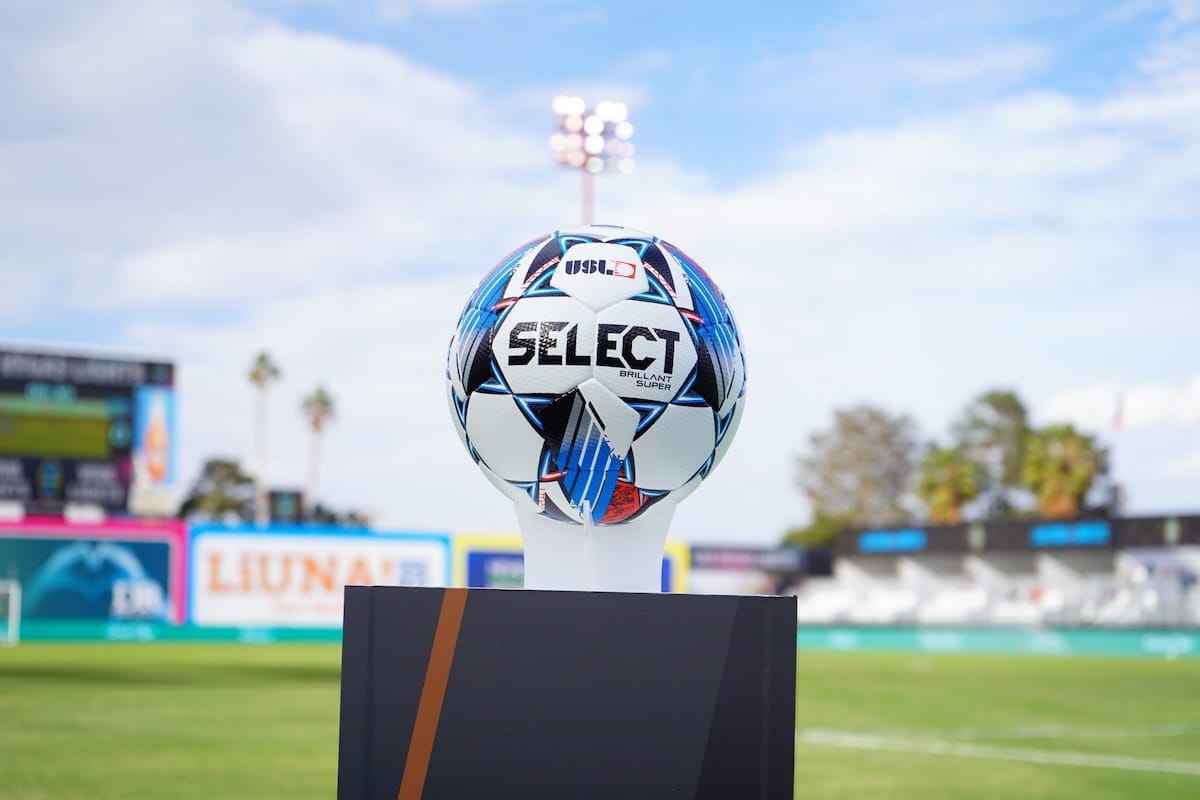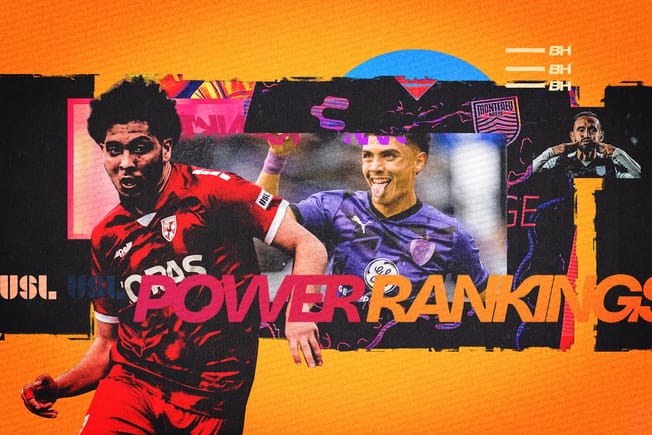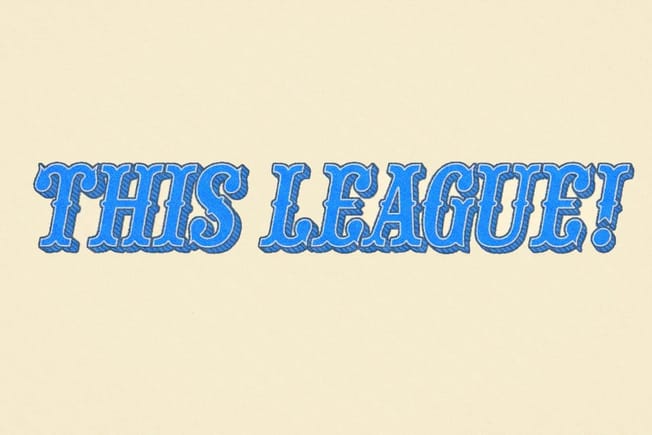Until 2023 when it was overtaken by the Premier League, Liga MX was the most-watched soccer league in the United States. Spanish-speaking fans comprised a major portion of the soccer-watching public across the country. When MLS entered into a partnership with Liga MX to create the Leagues Cup, their central aim was to capture some of that fanbase.
This week, the USL announced a partnership with TelevisaUnivision to air 11 regular season matches and the Championship title game on TUDN throughout the rest of 2024. The league’s engagement with Spanish-language channels has grown consistently since 2019, when the playoff final first aired on ESPN Deportes. By 2022, ESPN Deportes had picked up a 19-game slate.
Though the TUDN deal was late-coming this year, it marks a major step up from the previous partnership. TUDN is available in roughly three times as many homes as ESPN Deportes and is the Spanish-language home for Liga MX, UEFA club competitions, the Copa America, and select Mexican national team matches. Those network effects will also come into play for the USL Super League, which will sit next to the Premier League on Peacock starting this fall.
When the USL inked its deal with CBS ahead of the 2024 campaign, the value proposition was two-fold: CBS is a respected brand, and it offered the ability to position USL games next to some of the world’s biggest sporting events. The TUDN contract offers those same sorts of upsides and activates an audience that’s been historically underserved at a league-wide level.
The new deal kicked off with a two-game slate this weekend featuring Indy Eleven and Colorado Springs as hosts. How did those matches turn out? And what can we learn from the rest of a busy week on the field? Let’s dig in.

1. Indy (+1)
Result: 1-0 win v. San Antonio
No team has been as active in the transfer market as Indy Eleven, and that flurry of activity continued this week with the acquisition of Romario Williams.
The trade, which saw Younes Boudadi head to Hartford in exchange for Williams, is a bit of a head-scratcher on its face. Boudadi has seven assists over the past year and filled an important role at right back, even if Ben Mines began to steal some of his minutes. Williams, meanwhile, is the fifth forward to join a squad that only uses two at a time.
Injuries may be at play, and the Eleven know their needs. Tega Ikoba has been absent up top after a bright start to the year. Adding another forward could allow Indy to run a true 3-4-3, one that makes more and more sense amidst Aodhan Quinn's ever-lingering injury. It’s not like Williams is a slouch, either. He’s a full Jamaican international and scored 15 USL goals last season even if his brand of poaching isn't quite in line with the Indy system.
That fascinating move preceded a league bout against San Antonio, who the Eleven routed in the Open Cup a few weeks back. Romario Williams didn't get into the team, but Augustine Williams – likely feeling heat down his neck – was raring to go at striker. The existing forward was especially tricky when receiving on the edge of the box, juking and swerving to find space to shoot. His continued quality will make it devilishly hard for Sean McAuley to pick a side going forward.
Cam Lindley had a standout game against his former club as well. Lindley tends to do the unseen dirty work at the base of the midfield, but his job was doubly hard against a side employing dual No. 10s. Not only did the Indiana native ably shut them down, but his movement in possession, marked by an increased willingness to get upfield, asked meaningful questions in possession.
It wasn’t dominant, but Indy rarely has been. That’s by design in a grueling USL season that’s a marathon and not a sprint. This team changes gears masterfully within the run of a match, picking spots to express themselves before settling into a more conservative and structural mode. That intelligence and intention keeps on banking wins for the Eleven. They're undeniable.
2. Tampa Bay (+4)
Result: 3-2 win v. Louisville
Tampa Bay has relied on subtle tweaks within a standard 3-5-2 shape all season long to get stops, most often using the leftmost of their three central midfielders to push high as the opposition worked around the front line. This time around, with Louisville's 3-4-3 on the menu, the Rowdies were much more aggressive in the high press. The results were just as Robbie Neilson intended.
Up top, strikers Manuel Arteaga and Cal Jennings split wide against LouCity's outside defenders. That change alone was astute, recognizing how Louisville use late-arriving servers in the halfspaces across all phases of attacking play. Their width and depth in a defensive block almost rendered the Rowdies' shape a 5-5-0 at times.
Meanwhile, Josh Perez – that left-of-center midfielder – burst up to almost become a striker by proxy in the high press. The result? Precious little time for the guests to pick out passes. Using Perez in that role rather than Lewis Hilton or Daniel Crisostomo was well-considered. Perez is the most technical of the three in the final third; the other two provide more heft in the center of the park.
The real challenge came in the other direction against an equally fearsome defensive squad. Tampa Bay's approach was two-fold: try and quickly find Hilton in central pockets before LouCity could clamp down or, failing that, boot it into the channel and let Cal Jennings chase. Both methods were a mixed bag in truth, but the latter pattern had more "home run" potential and ultimately saw Jennings open the scoring just after the 30th minute.
That Louisville got back into the game was a function of faulty set piece defending. Both of their goals came from dead ball. Tampa Bay simply did more to control the run of play, and they deserved their winner in the end.
3. Louisville (-2)
Result: 3-2 loss at Tampa Bay
Last year, in a late-season loss to Tampa Bay, LouCity got a consolation goal from Cameron Lancaster with Manny Perez on the assist to try and galvanize a half-hearted comeback. Lancaster, a club legend that scored 75 league goals in purple, soon decamped to Lexington in USL League One; Perez was sold to Denmark to pursue a European future.
That game was a turning point. Louisville turned to their younger players and made an unexpected run to the conference title game. Those young stars have arrived in full in 2024 and got the chance to shine against Tampa Bay once again this Saturday night.
Elijah Wynder shone from the get-go. He often pushed high in the pivot of the LouCity 3-4-3 to mark Lewis Hilton and his ball carriage behind Tampa Bay's own front three proved crucial in build-out. But without Wilson Harris, one of those crucial young players, at striker, those right moments from Wynder too often led to nothing in the final third. Not only was Louisville's physical presence in the box diminished, but they lacked the same amount of energy and grit that typically defines their pump-and-run long ball game.
The Rowdies' defensive shape enhanced those problems. Tampa Bay overloaded the half spaces in the low block, denying the areas where Louisville usually feast. Initiating passes in build weren't as sharp, and the hosts were too often able to set the terms of the match.
Though LouCity scraped their way back to parity, they felt like the second-best team for most of the night. Louisville supporters shouldn’t raise their hackles. There’s a triumvirate atop the USL right now, and their team is firmly a part of it. Still, there’s room to grow for a team like Louisville that show flashes of historically significant dominance.
4. Memphis (+3)
Result: 2-2 draw v. Rhode Island, 2-1 win at New Mexico
It’s easy to sleep on Memphis. Though they comfortably finished in the top four in the East last year, they lost much of their core ahead of a conference switch this season. They don’t have the sexy names on the team sheet, and there’s something to be said for the fact that they’re playing on a patchy baseball field.
Still, even in the dry spells, 901 has a system. Stephen Glass has instilled particular attacking principles within a high-pressing, wing-centric 4-2-3-1, but his team is ready to run a back three at the drop of a hat. When things get frisky, Memphis’ well-drilled sense of identity lets them stay in the mix.
That was the case on Wednesday night against Rhode Island. 901 held two-thirds of possession and outshot their guests by a 14-attempt margin, but you wouldn't exactly call it a masterclass for a Memphis team that's usually quite fluid in possession. Their 2-4-4 shape was simple to shut down, and the backup plan of hoofing it long into the right channel has become familiar to USL foes by now.
Changing tacts and adopting a possessive back three should have helped on paper, but the flow wasn't quite there.
901 went long on almost 20% of their pass attempts. While a gaudy 55% of those tries were completed, it was emblematic of an inability to keep the ball on the ground and create chances. Though Akeem Ward (two shots, two crosses, six take-ons) was bright on the left and Stephen Glass at least tried to iterate, earning a point was up to Rhode Island's shocking inability to seal the deal more than anything else.
On Saturday, Glass took a big swing and moved the ever-flexible Lucas Turci from central defense to the striker spot. Turci's chief gift is his prodigious left foot. He's technical more than physical as a defender, and the central midfield is probably his most natural position, but a move to the forward line was a brand new innovation.
It wasn’t exactly a masterclass in attacking movement, but Turci knew how to throw his body around and get teammates involved. Marlon, the reigning USL Player of the Month whose season ignited when he moved to striker, slid to the right wing to accommodate the change, and his inward-slicing runs off the No. 9 were tremendous. It may have been wonky, but it was what the doctor ordered for 901.







